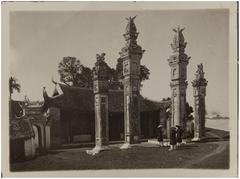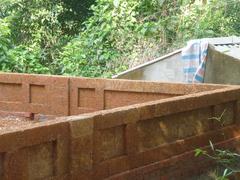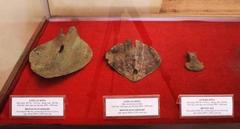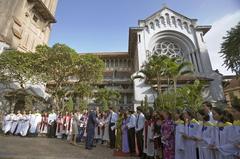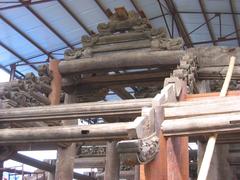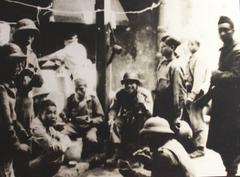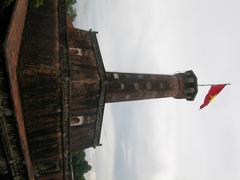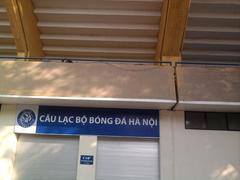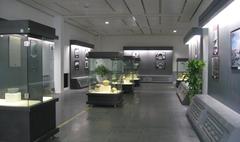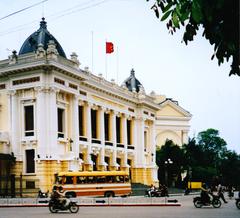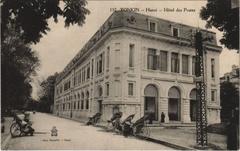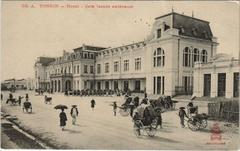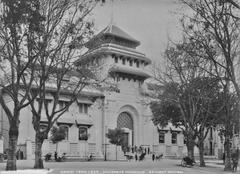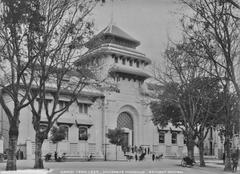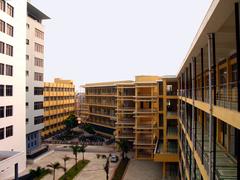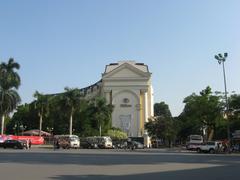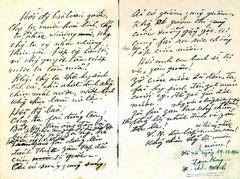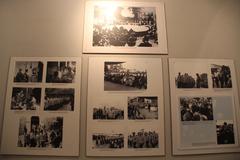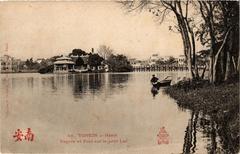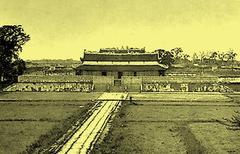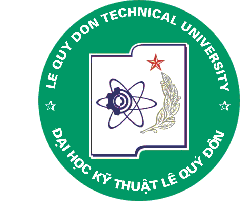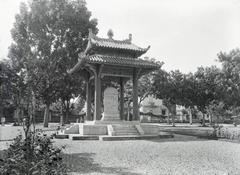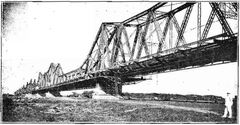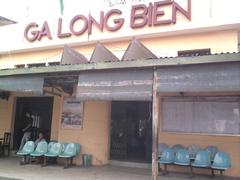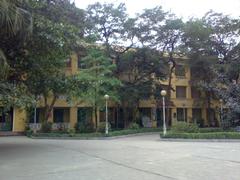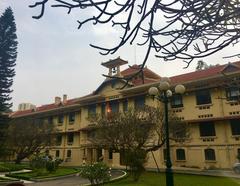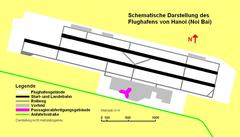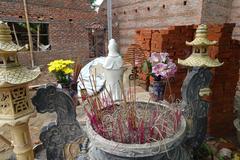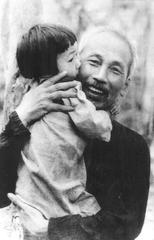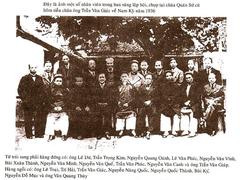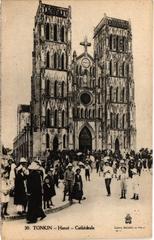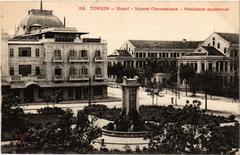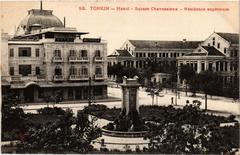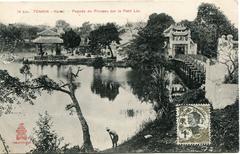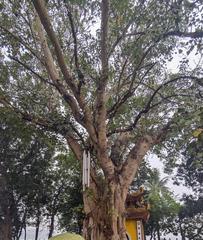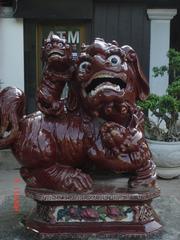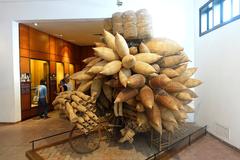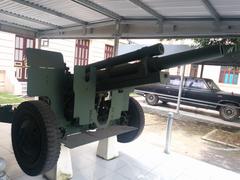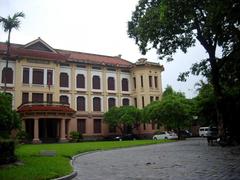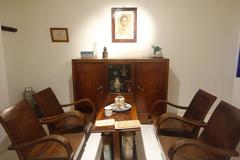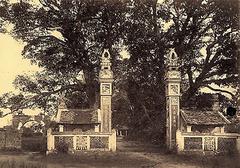Quảng Phú Cầu: Visiting Hours, Tickets, and Historical Sites in Hanoi
Date: 14/06/2025
Introduction
Quảng Phú Cầu, located 30–40 kilometers southwest of Hanoi in Ứng Hòa District, stands as one of Vietnam’s most iconic incense-making villages. Renowned for its centuries-old tradition of handcrafting incense sticks, the village provides visitors with an immersive experience into Vietnam’s rich spiritual and artisanal heritage. The vibrant displays of incense sticks, fragrant air, and the opportunity to interact with local artisans make Quảng Phú Cầu a must-visit destination for culture seekers, photographers, and anyone interested in traditional Vietnamese crafts. This comprehensive guide details visiting hours, ticket information, historical background, transportation options, and practical tips to enrich your journey.
(Local Vietnam, The World Travel Guy, Vietnam Budget Car Rental)
Table of Contents
- Introduction
- Origins and Historical Development
- The Craft of Incense Making
- Cultural and Spiritual Significance
- Visitor Information
- Visual and Sensory Experience
- Economic and Social Impact
- Responsible Tourism and Community Engagement
- Frequently Asked Questions (FAQ)
- Conclusion and Final Tips
- Sources and Further Reading
Origins and Historical Development
Quảng Phú Cầu boasts a tradition of incense-making that dates back over 300 years, solidifying its reputation as a leading producer in northern Vietnam. The village’s craft has been passed down through generations, with families preserving time-honored techniques and recipes incorporating up to 28 aromatic herbs, including anise, cinnamon, and clove. The fertile plains and favorable climate have allowed both rice and incense-making to thrive side by side, ensuring the village’s economic and cultural vitality through periods of change and modernization.
(Local Vietnam, Vietnam Budget Car Rental)
The Craft of Incense Making
Materials and Techniques
Quảng Phú Cầu artisans use locally harvested bamboo, which is cut, dried, and dyed in signature vibrant pink, red, and yellow hues. The sticks are coated with a fragrant paste made from sawdust, wood powder, natural resins, and traditional glues. The dye not only adds aesthetic appeal but also facilitates even drying in the sun.
Step-by-Step Production
- Bamboo Preparation: Bamboo is harvested, trimmed, and split into sticks, then dried and dyed.
- Paste Application: Artisans hand-roll an aromatic mixture onto the sticks.
- Drying: The incense is arranged in large, circular fans in open courtyards to dry under the sun.
- Bundling and Packaging: Dried incense is sorted, bundled, and packaged for sale in domestic and international markets.
This process is labor-intensive and relies on skilled hands, with each family often specializing in a particular stage of production.
Cultural and Spiritual Significance
Incense in Vietnamese Tradition
Incense is central to Vietnamese spiritual life, used in temples, pagodas, and homes during ancestral rites, festivals, and daily prayers. The act of burning incense symbolizes respect, remembrance, and the connection between the living and their ancestors or deities.
Heritage Preservation
The dedication of artisans like Nguyễn Văn Hòa, a recognized “Outstanding Artisan” in Hanoi, ensures the preservation of traditional methods and intangible heritage. Quảng Phú Cầu has become a living cultural museum, attracting both domestic and international visitors interested in Vietnam’s craft legacy.
Visitor Information
Visiting Hours and Tickets
- Hours: Open daily from 8:00 AM to 5:00 PM. Artisans are most active in the mornings and early afternoons.
- Tickets: Entrance is generally free, but some family-run workshops may request a small fee (20,000–50,000 VND) for guided tours or hands-on activities. Tickets are typically purchased on-site, directly benefiting the local community.
(The World Travel Guy, VietnamTour.in)
How to Get There
- By Car or Taxi: Book a taxi or private car from Hanoi (30–40 km). Ride-hailing apps like Grab and GoJek are available.
- By Motorbike: Experienced riders can rent a motorbike and navigate via Google Maps.
- By Bus: Take bus number 91 from Yên Nghĩa Bus Station to Quảng Phú Cầu commune (VinWonders).
- Organized Tours: Local agencies offer guided day trips, often including transport and workshop access.
Best Time to Visit
- Season: October to April (dry season) provides the best weather for viewing incense drying outdoors.
- Time of Day: Early mornings or late afternoons offer the best light for photography and a quieter atmosphere.
Accessibility and Facilities
- Infrastructure: Village roads may be narrow and uneven; comfortable shoes recommended.
- Amenities: Basic restrooms and small eateries available, but options are limited.
- Accessibility: Wheelchair access is limited; contact tour providers in advance for assistance.
Nearby Attractions and Travel Tips
- Combine your trip with visits to Hanoi’s Old Quarter, Temple of Literature, or other craft villages like Bát Tràng (pottery) and Vạn Phúc (silk).
- Wear light, modest clothing, and always seek permission before photographing artisans or entering private workshops.
Special Events and Guided Tours
- Cultural festivals and incense-making demonstrations are occasionally held; check local listings or with tour operators for current events.
- Guided tours, though not widespread, offer deeper insights and hands-on experiences.
Visual and Sensory Experience
Quảng Phú Cầu’s vibrant drying yards, filled with thousands of colorful incense sticks arranged in geometric patterns, create a visual spectacle. The air is thick with the aroma of herbal incense, making the experience uniquely sensory and memorable. These scenes are popular with photographers and culture enthusiasts.
(VinWonders, Asia News Network)
Economic and Social Impact
The incense industry remains the backbone of Quảng Phú Cầu’s economy, providing employment and supporting investments in education and infrastructure. Tourism has introduced new revenue streams, empowering local families and encouraging the preservation of traditional crafts. Export markets include China, India, Malaysia, and the UK.
Responsible Tourism and Community Engagement
- Support Locals: Purchase incense and crafts directly from artisans.
- Respectful Photography: Always ask before taking photos, especially of individuals at work.
- Sustainability: Minimize waste and avoid disturbing drying incense or raw materials.
- Cultural Sensitivity: Learn basic Vietnamese greetings, accept hospitality politely, and avoid sensitive topics.
Frequently Asked Questions (FAQ)
Q: What are Quảng Phú Cầu’s visiting hours?
A: 8:00 AM to 5:00 PM daily; mornings are best for activity and photography.
Q: Is there an entrance fee or tickets required?
A: General entrance is free; some workshops charge 20,000–50,000 VND for tours or activities.
Q: How do I get to Quảng Phú Cầu from Hanoi?
A: Options include bus number 91, taxi, motorbike, or joining a guided tour.
Q: Can I participate in incense-making workshops?
A: Yes, many workshops offer hands-on experiences, especially if booked via a local guide.
Q: Is the village wheelchair accessible?
A: Accessibility is limited due to narrow, uneven paths; inquire ahead if mobility is a concern.
Q: Is photography allowed?
A: Yes, but always ask before photographing artisans or private areas.
Conclusion and Final Tips
Quảng Phú Cầu is a living testament to Vietnam’s rich cultural tapestry—where tradition, artistry, and community spirit converge. Visitors are encouraged to explore respectfully, support local artisans, and embrace responsible tourism practices. By doing so, you help preserve a unique heritage and ensure the sustainability of this vibrant craft village for generations to come.
For up-to-date visitor information, cultural insights, and travel tips, download the Audiala app and follow us on social media. Consider pairing your visit with other Hanoi historical sites for a deeper appreciation of Vietnam’s diverse traditions.
Image credit: Guide to Hanoi
Explore Hanoi Travel Guide | Discover Bát Tràng Pottery Village | Visit Vạn Phúc Silk Village
Sources and Further Reading
- Quảng Phú Cầu Incense Village: Visiting Hours, Tickets, and Cultural Insights (Local Vietnam)
- Quảng Phú Cầu Incense Village: Visiting Hours, Tickets & Travel Guide to Hanoi’s Historic Craft Village (The World Travel Guy)
- Tourism Development and Community Impact (Vietnam Budget Car Rental)
- Quảng Phú Cầu Visiting Guide: Hours, Tickets, and Responsible Tourism Tips (Guide to Hanoi)
- Quảng Phú Cầu: Where Tradition Meets Fragrance in Hanoi (Asia News Network)
- Quảng Phú Cầu Incense Village Travel Guide (VietnamTour.in)
- Vietnam Responsible Tourism


